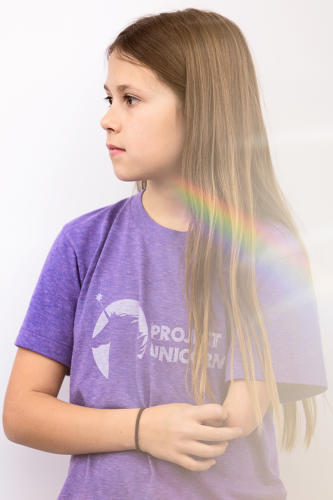The Girl Behind The Sparkle-Shooting Prosthetic Arm Is Just Getting Started
While showing off the sparkle-shooting prosthetic arm that made her an internet sensation, 11-year-old Jordan Reeves has a glitter emergency.
Over video chat from her home in Columbia, Mo., Jordan accidentally spills glitter all over her keyboard while loading the attachment. Her mom, Jen, in a restrained panic, comes in but Jordan plays it cool.
“I’m sorry,” she says, but quickly returns to showing off her next big thing.
The last 10 months have been a whirlwind for Jordan, who was born with a left arm that stops just above the elbow. After Fast Company first wrote about Jordan’s sparkle-shooting arm last March, she’s presented it at events all around the country, including a trip to Disney World, where she won the Dream Big, Princess award. Autodesk and Dremel gave her a 3D printer to use at home, and Awesome Without Borders chipped in $1,000 for filament.
“It’s just crazy,” Jordan says of everything that’s happened over the last year. “Good crazy. There’s no such thing as a bad crazy.”
Jordan’s latest project is less sparkly, but could have an even greater impact. Working with her prosthetist and a designer from Autodesk, Jordan has combined a medical-grade prosthetic arm with 3D-printed attachments at the wrist. That means she can interchange her usual prosthetic hook for a printed hand, a pirate’s hook, or whatever else she feels like building on her home 3D printer. This may be the first hybrid prosthetic arm made of medical and printed parts, so in a sense Jordan has made her way to the cutting edge as the worlds of medical and 3D-printed prosthetics start coming together.
Bringing A Hand To Life
3D-printed arms have been around for a few years now, and there are plenty of online instructions for people who want to make their own at home. Although these printouts aren’t as robust as medical-grade prosthetics, they cost tens of dollars instead of thousands, making them more practical for children whose bodies are still growing.
Still, the hand designs on community sites like Enable require a functional wrist or elbow. Jordan, along with her Autodesk mentor Sam Hobish, were unsuccessful in trying to adapt one of these designs to her arm, so last September, Jordan started brainstorming with her prosthetist on possible workarounds.
“She came with the challenge because she and Sam were trying to figure out a way to use those standard 3D-printed hands, and it got pretty aggravating,” Jen Reeves says. “She realized that it was not possible with any of the current 3D-printed design concepts, since she doesn’t have an elbow.”

David Rotter, the clinical director of prosthetics for Chicago-based Scheck & Siress, has been working with Jordan Reeves since she was about three years old. Together, they had an idea: Create a traditional prosthetic arm with a connection at the wrist for screwing in a 3D-printed hand. The printed hand then connects with string to a shoulder harness, the kind that Jordan already uses to control her standard prosthetic hook. By moving her shoulder, Jordan can control the hand’s grasp.
“It’s a really ingenious concept that they figured out,” Jen Reeves says. “It’s not simple in reality, but it looks simple, and you just string it together.”
Beyond just accommodating the printed hand, the prosthetic can be a base for other attachments. In the package that Rotter shipped to Jordan, he also included a standard prosthetic hook and—by Jordan’s request—a rather sturdy pirate hook. Connecting future creations would only require gluing on a compatible screw, which Jordan says she’s found at Home Depot.
“Where it gets fun is the pieces that can be made to put on the end of her prosthesis,” Rotter says. “That’s really where I think we’re going to have a good interaction between what I’ve made, what Jordan can conceptualize, and what perhaps Sam can help her produce, to see if this is something that’s usable for her and provides her with sufficient utility.”
Jordan, who got the package just in time to show it off at a Kid Inventors’ Day event in New York City last Tuesday, seems thrilled, despite some initial hiccups with figuring out how to use it.
“First I was frustrated, because I didn’t know exactly how to work it and stuff,” Jordan says, “but now I think it’s really, really, really, really cool.”
Old Meets New
Despite this success story, Rotter is still approaching 3D-printed prosthetics with caution. He has a printer in his lab, but so far he’s only used it for one-off projects, such as tooling that could help create new medical-grade prosthetics. To date, he hasn’t sent a single patient off with a prosthetic that’s entirely 3D-printed, noting that there are too many variables that might lead to weak constructions.
“Specifically for upper extremity prosthetics, I just don’t think we’re there as far as dispensing something that I would feel comfortable billing insurance for,” Rotter says.
Still, the medical and 3D-printed worlds are starting to coalesce. Hobish recently started working with the Enable Community Foundation, a nonprofit spin-off of the online community that helps people create their own printed hands. He’s helping to develop a software program, called LimbForge, that can adjust the size of an entire 3D model based on changes to a specific measurement. Enable has been working with prosthetics experts along the way, Hobish says, and using workflows that the medical community has established.
“It does incorporate a lot of traditional prosthetics techniques when it comes to how we take the measurements and how we’re working with the patients,” Hobish says.
The ultimate goal is to help volunteer organizations in disaster-stricken countries print out lots of prosthetics in short order. In a country like Haiti, for instance, medical prosthetics are harder to come by, and limb differences carry a greater stigma. Printed hands, Hobish says, can help give people a semblance of passing.
“It improves their lives by allowing them to avoid being singled out,” he says.
Both Rotter and Hobish are excited at the prospect of more collaboration between the medical and 3D-printed worlds, and Rotter says Jordan’s story is a great example of how these efforts are coming about.
“Someone needed to say, ‘Cool, I’m going to design a glitter shooter,'” Rotter says. “Someone from Autodesk needed to say, ‘Cool, let’s take this girl who’s got this desire to do things and let’s partner with her and see if we can come up with some cool solutions.’ And myself, I’m also looking to bridge these gaps between end users and the traditional approach.”

Sparkle 2.0
As for what Jordan will do next, she mentions a desire to 3D-print an Eiffel Tower, but after Kid Inventors’ Day she had more practical endeavors on her mind. For example, she’d like to design a portable contraption to help dispense paper towels in public bathrooms—a mundane task for most, but one that sometimes demands two hands.
Jordan’s also becoming a bigger advocate for other kids with physical differences, “so more kids can be able to do what I’m doing, and get the opportunity to do what I want to do,” she says.
To that end, Jen Reeves has created a 501(c)(3) nonprofit called Born Just Right, whose goal is to help kids and their parents get educated on design, and connect them with organizations that also want to get involved. Jordan’s been helping write blog posts and shoot videos, and generally serving as a role model. She’s also been petitioning doll maker American Girl to create dolls with limb differences, and she’s hoping to return to Superhero Cyborgs, the program put on by educational group KIDmob where she first achieved viral fame.
And yes, there will likely be a new version of Project Unicorn—or at the very least, a replacement for the current model, which is in disrepair after yet another round of demonstrations—ensuring a further trail of glitter emergencies.
“I still find it in my clothes,” Hobish says.
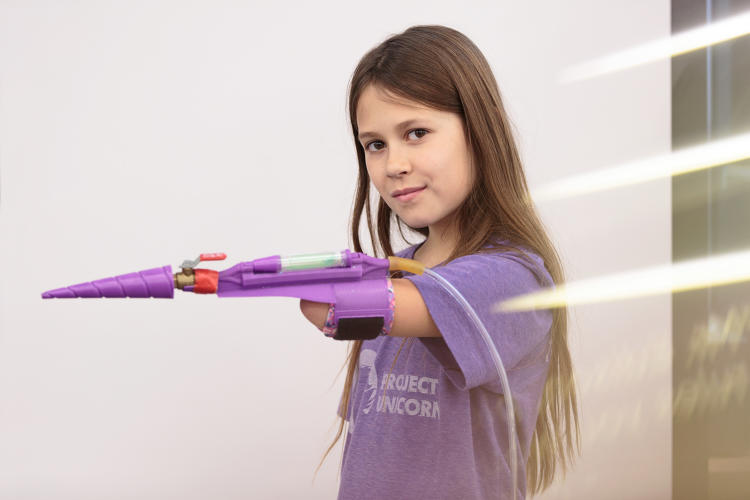

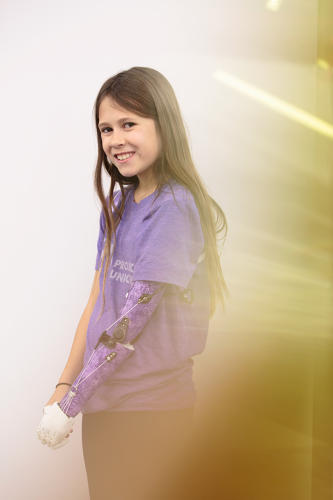
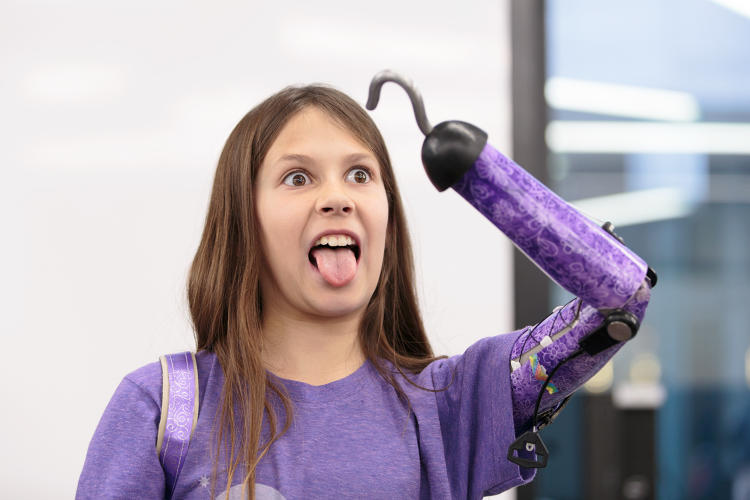
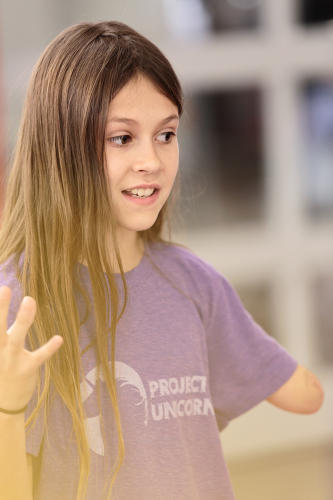
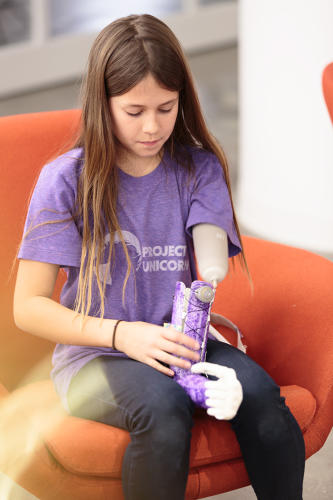
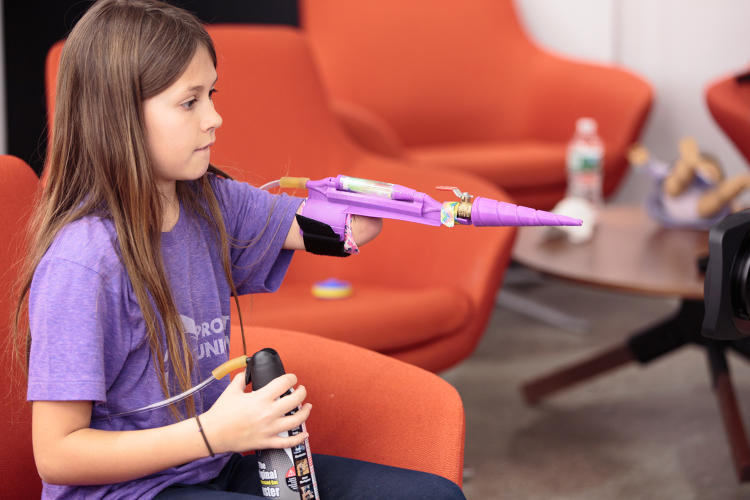
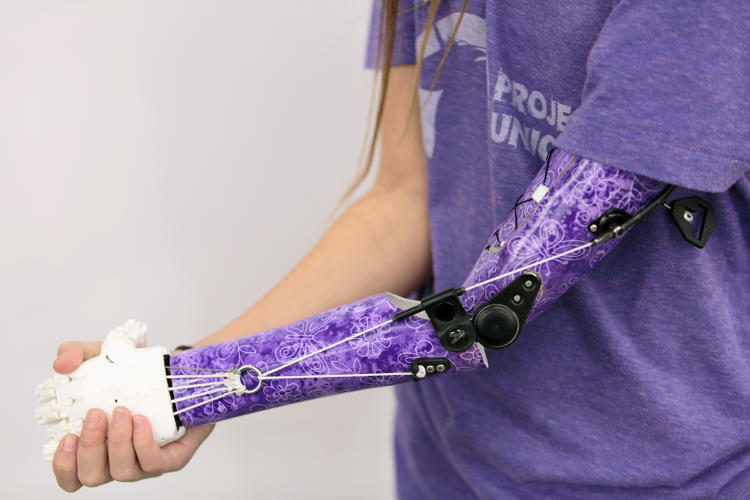
Fast Company , Read Full Story
(62)

